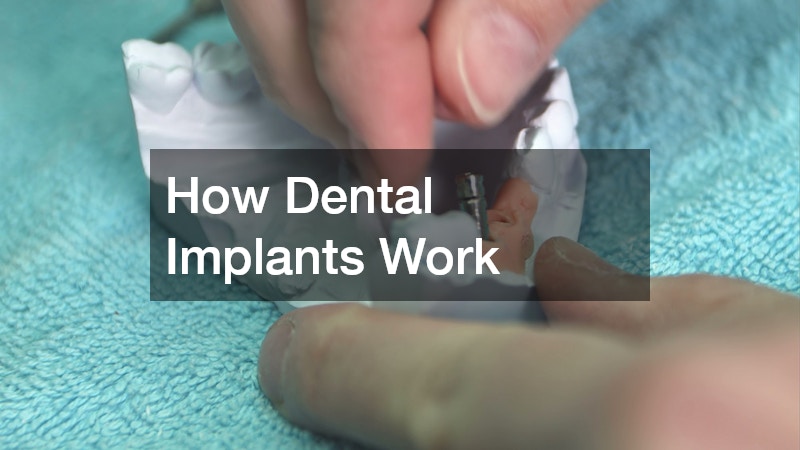Introduction
In this article, we will explore everything you need to know about dental implants, including their benefits, the procedure, cost factors, and maintenance tips. Dental implants are a popular and effective solution for replacing missing teeth, providing both functionality and a natural appearance. Let’s delve into the key aspects that you should be aware of.
1. What Are Dental Implants?
a. Definition and Basic Overview
Dental implants are artificial tooth roots, usually made from titanium, that are surgically placed into the jawbone. Once in place, they provide a strong foundation for fixed (permanent) or removable replacement teeth that are made to match your natural teeth. The integration of the implant into the jawbone is an essential aspect of its stability and natural feel.
b. Types of Dental Implants
There are primarily two types of dental implants: endosteal and subperiosteal. Endosteal implants are the most commonly used and are placed directly into the jawbone. Subperiosteal implants, on the other hand, are placed under the gum but above the jawbone, suitable for patients who do not have a healthy enough jawbone and do not want to undergo a bone augmentation procedure to rebuild it.
c. Differences Between Implants and Other Dental Solutions
Unlike dentures, which are removable and can feel unstable, dental implants provide the feel and function of natural teeth. Compared to bridges, implants do not require altering the surrounding teeth, which helps preserve the overall dental health. Implants are designed to fuse with bone, making them permanent, whereas bridges and dentures may need replacement or adjustment over time.
d. Benefits of Dental Implants
Dental implants offer significant benefits; they restore full chewing power, look and feel like natural teeth, and can last a lifetime with proper care. They help prevent bone loss in the jaw and can support facial structures, avoiding the sunk-in look that often accompanies tooth loss. Additionally, implants do not suffer from cavities, although proper oral hygiene is still essential to maintain surrounding tissue health.
e. Candidates for Dental Implants
Ideal candidates for dental implants are those with sufficient bone density to support the implant, good oral hygiene, and generally good health. Candidates should be non-smokers or willing to quit smoking as it can affect the healing process. An initial consultation will typically assess your suitability for the procedure, including health history and any medications that might impact dental surgery outcomes.
2. How Is the Dental Implant Procedure Performed?
a. Initial Consultation and Assessment
The process begins with a dental exam and review of your medical history. The dentist will take X-rays and possibly 3D images to assess bone quality and determine implant placement. This first step is crucial for preparing a detailed treatment plan that is tailored to the patient’s needs.
b. Preparation and Planning
Successful dental implant procedures depend heavily on meticulous planning. This may involve various specialists, including a periodontist, an oral surgeon, and a prosthodontist, who will collaborate to prepare the treatment plan. This team approach ensures that every aspect of the implant process is considered, from bone structure to the final aesthetic appearance.
c. Stages of the Implant Procedure
The dental implant procedure is typically performed in stages. The damaged tooth is first removed if still present. Then, if the jawbone requires it, bone grafting might take place. After the jawbone heals, the implant is surgically placed into the bone. This is followed by a healing period that can last several months. Once healed, an abutment is placed, followed by the artificial tooth or crown.
d. Recovery and Healing Process
Following implant surgery, it’s normal to experience some discomfort, such as swelling, bruising, minor bleeding, and pain at the implant site. Your dentist will prescribe pain management medication and antibiotics to help prevent infection. Strict oral hygiene must be followed, and follow-up visits are necessary to check on the implant, surrounding bone, and the healing process.
e. What to Expect During and After the Procedure
During the procedure, local anesthesia or IV sedation is typically used to ensure comfort. After the procedure, patients can often return to work the next day, provided they do not engage in physically demanding tasks. Long-term outcomes depend greatly on the patient’s commitment to good oral hygiene practices and regular dental visits.
3. What Are the Costs Involved with Dental Implants?
a. Factors Affecting the Cost
Several factors influence the cost of dental implants. These include the number of implants, the need for bone grafts, the material used, and the region where the surgery is performed. Specialist fees and the complexity of the procedure also play significant roles in the overall cost.
b. Insurance and Financing Options
Insurance coverage for dental implants varies by provider and plan. Some plans may cover a portion of the cost, while others may not cover any part of it. Many dental offices offer financing options, and there are medical credit companies that specialize in funding medical and dental procedures, allowing for manageable monthly payments.
c. Average Cost Breakdown
The cost of a single dental implant can range from $1,000 to $3,000, depending on geographical location and clinical setup. Additional costs for the abutment and crown can increase the total to $3,000 to $5,000 per tooth. Comprehensive plans covering multiple implants and associated procedures can cost significantly more.
d. Long-term Value and Investment
Despite the upfront costs, dental implants are a long-term investment in oral health. They are durable, often lasting a lifetime with proper care, compared to other restorative procedures that may require repeated treatments. Moreover, implants help preserve the jawbone and prevent further dental issues, potentially saving money on future dental costs.
e. Comparing Costs with Other Treatments
When comparing costs, it’s important to consider the longevity and benefits of dental implants versus other options like bridges and dentures. Bridges and dentures typically require replacement every 5 to 10 years and may lead to further bone loss, potentially leading to higher long-term costs and ongoing issues.
4. What Are the Risks and Complications?
a. Common Risks Associated with Dental Implants
As with any surgical procedure, dental implants come with risks. These can include infection at the implant site, nerve damage resulting in pain or numbness, sinus problems when implants placed in the upper jaw protrude into sinus cavities, and possible implant failure due to improper fusion with the bone.
b. Signs of Potential Complications
It’s important to watch for signs of complication after receiving an implant, such as persistent pain, swelling, or unusual movement of the implant. Pus or persistent bleeding from the site are also red flags that require immediate medical attention to prevent further health risks.
c. How to Minimize Risks
Choosing an experienced dental implant specialist and following all post-op instructions are crucial steps in minimizing risks. Ensuring good overall health and maintaining excellent oral hygiene can also reduce the risk of complications.
d. When to Contact Your Dentist
If you experience severe pain, signs of infection, or problems with the implant itself, contact your dentist immediately. Early intervention can prevent complications and improve the chances of a successful outcome.
e. Success Rates of Dental Implants
The success rate of dental implants varies but is generally high, with studies showing rates above 95%. Proper patient selection and adherence to care instructions significantly contribute to the success of dental implants.
5. How Do You Care for Dental Implants?
a. Routine Oral Hygiene Practices
Good oral hygiene is critical for the longevity of dental implants. Brushing twice daily, flossing daily, and using antiseptic mouthwash helps prevent gum disease and ensures the health of the implant.
b. Specific Care Instructions for Implants
Your dentist may provide special instructions on caring for your implants, which might include specific brushing techniques or the use of special interdental brushes to clean around the implants effectively.
c. Foods and Activities to Avoid
Following implant surgery, it’s wise to avoid hard and sticky foods that can damage the implant. Smoking is also discouraged as it impairs healing and can negatively affect the long-term success of the implant.
d. Regular Dental Check-ups and Maintenance
Regular check-ups and cleanings are essential for maintaining dental implants. These visits allow your dentist to monitor the implants and ensure that the gums and bones remain healthy.
e. Signs Your Implant May Need Attention
If you notice loosening of your implant, discomfort, or swelling, it’s important to seek prompt dental advice. These could be signs of infection or implant failure.
Conclusion
Understanding dental implants, from what they are to how they are maintained, can help you make an informed decision about whether they are the right choice for your dental health needs. With proper care and consideration, dental implants can provide a durable and aesthetically pleasing solution to missing teeth, enhancing your quality of life.


